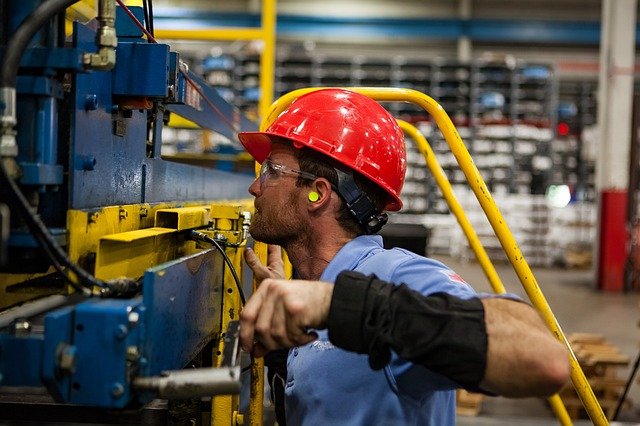- November 10, 2021
- Posted by: David Marshall
- Category: Business, Leadership, Management, Safety

One of the most difficult things to do in a manufacturing operation is to fire union employees. Unions have historically played an important role in establishing workers’ rights and guaranteeing their safety. But there are some workers who take advantage of the union and hide behind it when they’ve been doing poor quality work or not performing to their full capabilities.
Therein lies the value of the four non-negotiables. They cover just about anything you can imagine. Even in a union environment, providing you are consistently executing on the four non-negotiables and never negotiating them away, you can fire anybody if they don’t meet those standards you have set for the organization.
The four non-negotiables are:
- Safety. Everyone needs to heed all safety rules at all times, and they need regular, ongoing safety training. I’ve fired people for violating safety rules because a person could be permanently disabled or even killed. If they violate it once, I can’t believe they won’t do it again..
- Housekeeping. Housekeeping in any organization, not just a factory, should be everybody’s responsibility and not just the maintenance staff. Housekeeping affects safety, which means it’s everyone’s responsibility. Work areas should be kept clean, floors and hallways should be kept clear, and machines should be maintained and updated as needed
- Productivity is whether a person can get their work done, or whether they have too many distractions, meetings, or problems with their workspace. It’s the measurable, quantifiable results of their efforts and equipment.
- Check your ego at the front door and bring your brains inside. Nearly all conflict is generally ego-driven. I want to do things my way and you want to do things your way. I believe I’m right, and you believe you’re right. And if those two things don’t match, conflict happens. So avoid the conflict and leave your ego outside.
 When you have to deal with a disruptive employee, you can usually apply one of these four non-negotiables to the problem. Did the person do something unsafe? Did the person ignore their housekeeping requirements, such as leaving tools out or their workstation messy? Is their productivity meeting company standards? Are they causing too many conflicts?
When you have to deal with a disruptive employee, you can usually apply one of these four non-negotiables to the problem. Did the person do something unsafe? Did the person ignore their housekeeping requirements, such as leaving tools out or their workstation messy? Is their productivity meeting company standards? Are they causing too many conflicts?
In a factory, productivity is usually the most important factor in a person’s job role, and measurement is how you determine whether they’re meeting those performances. And no matter who the person is, if they’re not meeting their productivity requirements, why would you keep them around? After all, you wouldn’t go to a restaurant and pay full price for three-quarters of your meal, would you? So why would you pay someone a full-time salary to only show up 75% of the time or do 75% of the work?
An example
Normally, in a production facility, nearly everyone walks through a door, clocks in on a time clock, goes to the break room, visits the bathroom, has a coffee, has a chat, and then ambles off to their workstation and maybe starts to do something. That can take up to 30 minutes, but as soon as they clock in, you have to start paying them. So you’re paying them to do the things that should have happened off the clock.
I never minded people chatting or having coffee, I just didn’t want to pay them to do it.
So I made sure I didn’t have to. We changed the clock-in system so people had to clock in at their work station at the designated time, and they had to start work immediately. At the end of the day, to be able to clock out, they had to agree on the screen that they had worked X number of hours.
“Do you agree, yes or no?”
If they said no, they had to go to their supervisor and solve the problem. Maybe they think they worked longer than the hours showed, so they would want to get that figured out right away. If they said yes, then there’s no problem. And if they ever came back and said they were shorted on their paycheck, well, they were the ones who agreed to the number of hours every day before they left.
Of course, we also compared their productivity to the number of hours worked.
During the day, as they handled each work order, the order would show the standards in the system and say on the screen, “It should take you 30 minutes to produce 20 of these units.” If it took you an hour to do it, the system would say that you didn’t meet your work rate, which meant that you had seven hours to make up the efficiency difference.
Then, at the end of the day, the system would tell you if you met your efficiencies or not. And if you didn’t, the supervisor would have a chat with you the following day to ask what problems you had, whether you had the right tools, whether the machinery was set right, and so on. If there was no reportable reason why efficiencies shouldn’t have been reached, there could be some consequences, the least of which was “Don’t screw up again or you’re in trouble.”
If an associate regularly didn’t meet their work rate requirements, they would have to be let go.
How does measurement solve disruptive issues?
It’s fundamental human nature to not want to do the things we’re supposed to do. That’s why we chat, go to the bathroom, get coffee, and so on before we go to work. Using measurement and requiring people to clock in at their workstation solved a lot of these problems because I no longer had to pay people to do them. And I was able to get rid of the disruptive people who still weren’t trying to meet their obligations or finish their work requirements after they clocked in.
In 22 odd years, I never lost a grievance. Whenever I fired an employee for lack of performance, I would hear from their union rep who wanted to meet and discuss the firing. I would bring out all the evidence and show where they weren’t meeting the standards that the union itself had negotiated.
I would say, “The decision is final and here’s why. If you’d like to take it to arbitration, knock yourself out.” But no one ever did because I could show that that particular associate was not meeting their work performance standards on a regular basis.
But before you think that I only ever did this so I could fire people, let me show you how measurement could be used to solve a person’s own disruptive issues that they may not have even been aware of.
There are times that people can be very distracted with problems at home — pregnant daughter, troublemaker son, going through a divorce. Nine times out of ten, the employer doesn’t know what the problems are because they don’t have a system to know that.
Those issues will affect the individual’s performance, even if they themselves are not aware of it. It could even affect their safety if their minds aren’t on their work and they’re not paying attention to their machines. The measurement system will show you that there’s a problem.
As such, it will give your managers a chance to talk with the employee and find out what’s going on. Rather than an employee just reporting to their floor manager and saying, “I’ve got troubles at home and I’m losing my focus” — we both know that will never happen — the manager can come to the employee and say, “It looks like your rate fell off yesterday. What’s going on?”
That gives you a chance to step in and help them, or even just offer them a sympathetic ear for a while. You can give the employee time off or refer them to someone who can help. Most importantly, you’re aware of the problem and can help the employee solve their issues so they can return to work without any distractions or risks.
I’ve been a manufacturing executive, as well as a sales and marketing professional, for a few decades. Now I help companies turn around their own business, including pivoting within their industry and working with their local union. If you would like more information, please visit my website and connect with me on Twitter, Facebook, or LinkedIn.
Photo credit: jotoler (Pixabay, Creative Commons 0)

